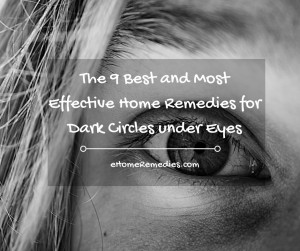Are you worried that you or someone you know might have an eye disease or condition? Eye diseases and conditions can range from mild to severe, but they all have one thing in common: they need attention and treatment in order to stop them from progressing.
In this article, we provide a comprehensive guide on how to identify and treat the most common types of eye diseases and conditions that people encounter. We will discuss the warning signs of each condition, as well as the available treatments for each one. Lastly, we provide tips on the prevention and maintenance of healthy eyesight.
Overview of Eye Diseases & Conditions
Many eye diseases and conditions can be categorized into five categories: infections, injuries, degenerative diseases, tumors, and other conditions.
- Infections: Infectious eye diseases are caused by bacteria, fungi, or viruses that invade the eyes. Common infectious conditions include conjunctivitis (pink eye), blepharitis (inflammation of the eyelids), uveitis (inflammation of the uvea, or inner layers of the eye), and keratitis (inflammation of the cornea). Symptoms may include redness, pain, discharge from the eyes, sensitivity to light, blurred vision, and itching.
- Injuries: Traumatic injuries to the eye can occur due to accidents such as car crashes or falls. Symptoms may include pain, vision loss, double vision, swelling or bruising around the eye, and bleeding.
- Degenerative Diseases: Degenerative diseases are conditions that cause progressive deterioration of the eye over time. Common degenerative diseases include glaucoma (increased pressure in the eye), age-related macular degeneration (vision loss due to damage to the central area of the retina), cataracts (cloudy vision due to clouding of the lens in the eye), and diabetic retinopathy (damage to the blood vessels in the retina due to diabetes).
- Tumors: Tumors can form either on or inside the eye. Symptoms may include blurred vision, double vision, swelling or bulging of the eye, and changes in vision.
- Other Conditions: Other common conditions include nearsightedness (difficulty seeing distant objects), farsightedness (difficulty seeing close objects), astigmatism (blurred or distorted vision due to an irregularly shaped cornea or lens), dry eyes, and iritis (inflammation of the iris).
Identifying and Treating Eye Diseases & Conditions
The best way to prevent eye diseases or conditions from progressing is to identify them early. It’s important to take a vision test regularly—ideally once a year or more often if you have an existing condition. In Jacksonville, FL, there are several optometric and ophthalmologic specialists available to provide comprehensive vision tests.
Once an eye disease or condition is identified, the next step is to determine the appropriate treatment. Treatment options for eye diseases and conditions vary depending on the specific diagnosis. However, some of the most common treatments include medications (such as eye drops and/or oral medications), surgery, laser therapy, or implants. Your ophthalmologist can provide more information about the best treatment option for your particular condition.
Tips for Maintaining Healthy Eyesight
In addition to regular vision tests, there are several steps you can take to help maintain healthy eyesight. Here are a few tips to keep in mind:
- Wear sunglasses that protect against UV rays (or use a hat with a wide brim) when outdoors.
- Take breaks from screens and give your eyes a rest throughout the day.
- Eat foods that are high in antioxidants, such as leafy greens, carrots, and citrus fruits.
- Maintain a healthy weight to reduce the risk of diabetes and other eye diseases.
- If you wear corrective lenses, be sure to update your prescription as needed.
- Have regular comprehensive dilated eye exams with an optometrist or ophthalmologist.
By following these tips, you can help maintain healthy eyesight and reduce the risk of developing an eye disease or condition. If you experience any changes in your vision, it’s important to seek medical attention right away.
Conclusion
Eye diseases and conditions can range from mild to severe, but they all have one thing in common: they need attention and treatment in order to stop them from progressing. By understanding the warning signs and available treatments for each condition, as well as taking steps to prevent and maintain healthy eyesight, you can help protect your vision. If you have any questions or concerns about your vision health, be sure to consult with an optometrist or ophthalmologist right away.
Further Readings:
12 Simple Home Remedies for a Black Eye
9 Most Effective Home Remedies for Dark Circles under Eyes

